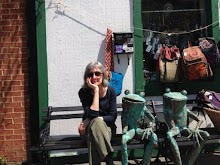I wonder who lives in that coop apartment now, the one my family lived in until I entered 3rd grade in the mid-1960s. Through the miracle of Google Maps, I can see it clearly from all angles, confirming my memories of a vast sprawl of identical four-unit brick apartment buildings arranged to create a network of inner courtyards. I am impressed now by the neighborhood design, viewing it in satellite mode. I remember the sense of freedom, the opportunities for unsupervised play without ever having to cross a street. I remember feeling at ease entering someone else’s apartment (without knocking) because I needed to use the bathroom; I imagine we had the vague sense that apartments (and mothers) were basically interchangeable.
I thought this post was going to be about systemic racism and white flight, about how the GI bill allowed my father to buy a modest house in another town just as Black families were able to afford the coop neighborhood. But what is unexpectedly hitting me right now is the sorrow of my mother’s depression – a depression that arrived with my birth and settled in for a lifetime. That idyllic suburban neighborhood – set amidst woods, requiring a car to shop or go anywhere – was an isolation tank for her, as the early suburbs were for a generation of white women trapped in the post-war, “homemaker” days. Racism, patriarchy, socio-economic striving. A toxic mix.
I thought this post was going to be about systemic racism and white flight, about how the GI bill allowed my father to buy a modest house in another town just as Black families were able to afford the coop neighborhood. But what is unexpectedly hitting me right now is the sorrow of my mother’s depression – a depression that arrived with my birth and settled in for a lifetime. That idyllic suburban neighborhood – set amidst woods, requiring a car to shop or go anywhere – was an isolation tank for her, as the early suburbs were for a generation of white women trapped in the post-war, “homemaker” days. Racism, patriarchy, socio-economic striving. A toxic mix.
